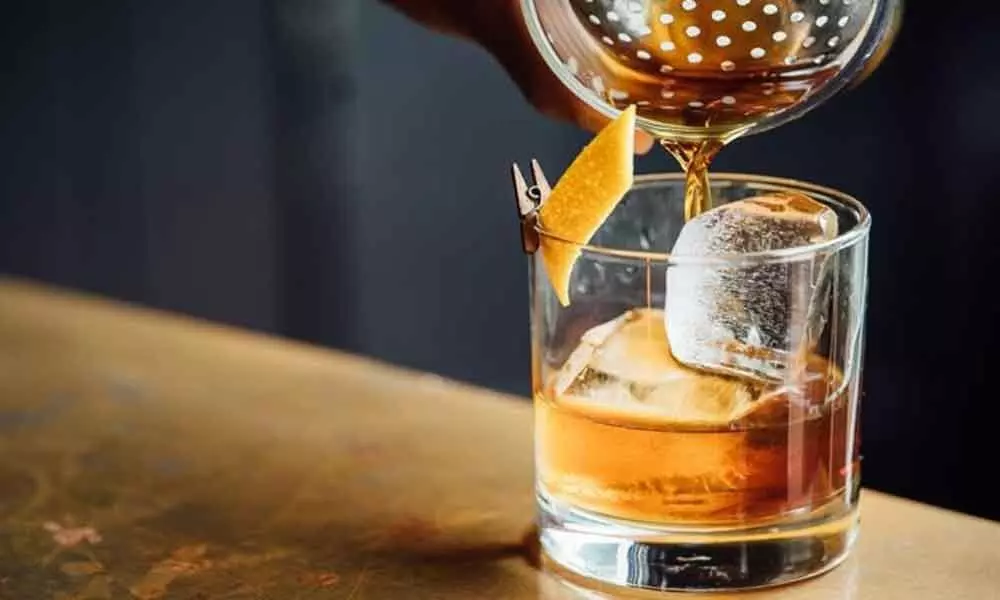Live
- Centre launches campaign for assessment year 2024-25 to help taxpayers
- Dutch cabinet holds out after crisis talks
- Rashmikasparks buzz on Grazia cover page
- Shiva Rajkumar scores another blockbuster with ‘Bhairathi Rangal;’ Telugu release coming soon
- Nayanthara’s open letter to Dhanush: A shocking rift
- ‘Govt job’: Punjab has emerged as role model state, says Kejriwal
- BGT 2024-25: Shubman Gill suffers left-hand injury in training ahead of Perth Test
- Slur against Kumaraswamy wrong, Minister Zameer will be corrected: K’taka Cong
- Australian towns ordered to evacuate amid bushfire threat
- BJP backs LG's crackdown on illegal immigrants in Delhi
Just In

There is a perception amongst scotch whisky drinkers all across the world that single malts are superior to blended scotches. This idea has grown in popularity over the past two decades, fed largely by economic forces and opportunistic marketers.
There is a perception amongst scotch whisky drinkers all across the world that single malts are superior to blended scotches. This idea has grown in popularity over the past two decades, fed largely by economic forces and opportunistic marketers. Firstly, let's just clarify one thing: single malts and blended scotches are both produced by blending different scotch whiskies together. The only type of scotch that isn't a blend of two or more whiskies is a single-cask scotch.
The difference between single malts and blended scotches lies in what they are blends of. Single malt is a blend of whiskies that are produced from malted barley ('malt whiskies') at a single distillery. A blended scotch, by contrast, is a blend of whiskies made from both malted barley and from wheat or maize ('grain whiskies'), that come from multiple distilleries.
Blended scotch counts for 90 per cent of the global scotch market, and was integral in establishing the global scotch-drinking culture. And that's because they came first, commercially speaking. For the longest time, blended scotch was the standard-bearer for the category; single-malts only began to be marketed internationally as standalone products from the 1960s onwards, while many of the pioneering blenders began their craft in the mid-1800s.
At this time, scotch whisky production itself was still a largely unregulated and unlicensed cottage industry; held back by a partisan aversion to the licensing and tax schemes implemented upon the whisky industry by the British government. Pioneering blenders such as brothers James and John Chivas and George Ballantine sought to bring balance, consistency and commercial appeal to scotch whisky by blending the rough-and-ready casks they purchased from local distillers to produce something smooth and approachable; greater than the sum of its parts.
Blended scotch enjoyed in numerous accolades and devotees for many years as it spread across the world, and established the reputation of Scotch whisky in both the global and luxury spheres. But with the advent of single malt sales and the unstoppable rise of vodka from the mid-1900s onwards, blended scotches quickly fell out of fashion. Prices were slashed to stimulate sales, therein sparking the association between blended scotches and perceived inferiority. Many came to adopt a purists approach to scotch whisky, viewing blends as a dilution of a single malts superiority.
Of course, this is entirely unwarranted; why would a mix of some of your favourite individual whiskies be considered inherently inferior? Comparing single malts and blended scotches is like comparing apples with oranges, or different primary colours: they're meant to be different.
Being made from just malted barley at a single distillery, the aim of a single malt is to showcase that distillery's style and voice; to tell the world what they choose to do with the variables and controls within their reach. A blend, by comparison, is about combining the flavours of multiple distilleries and multiple types of grain to produce something balanced, versatile and consistent. For example, while some of us may not appreciate a bold, peaty & medicinal Islay single-malt, we can certainly be enchanted by the hint of smoke it brings to a well-made blend. Equally, the intense spicy profiles of Highland single malts might overpower the palette and senses of some whisky drinkers. But when they're tempered by a creamy grain whisky and a fruity Speyside malt, can provide a welcome delicate spiciness to a particular blend.
Grain whisky -- usually made from wheat or maize -- is the often-overlooked component of a blended scotch but can account for up to 50-60% of its composition. Grain whisky's light and creamy style is the linchpin that holds a blended scotch together, maintaining balance and harmony. Like the diplomatic host at a dinner party, a grain whisky has the charming ability to take big, self-confident single malt personalities and allow them all the space to express themselves at the dinner table.
And the best thing about all of this? Well, it's that you don't have to choose between single malts and blended scotches! With the growth and diversity of malt and blend production we've seen in recent years, we are poised - now more than ever - to make the most of the variety of whisky experiences resting at our fingertips and on the shelves of every bar. If there was one whisky that suited every person, every climate and every mood, how many whiskies would there be on the market? That's right, one. But there are hundreds to sample and enjoy; writing off a vast majority of that choice and opportunity would be misplaced at best. So, give blends ago; in doing so, you convene with the real history of scotch whisky.
- Rajan Virdee is the brand ambassador of Chivas Brothers.

© 2024 Hyderabad Media House Limited/The Hans India. All rights reserved. Powered by hocalwire.com







